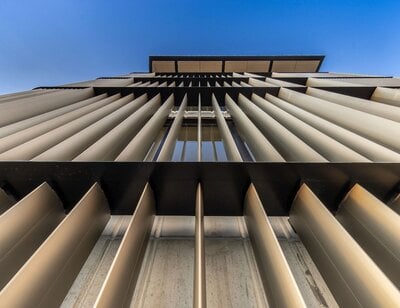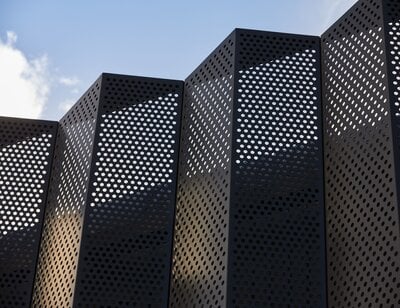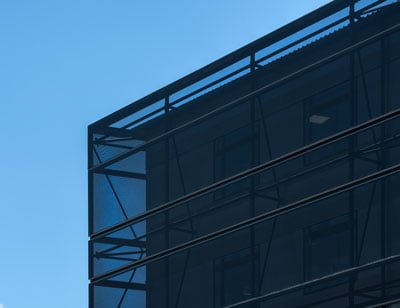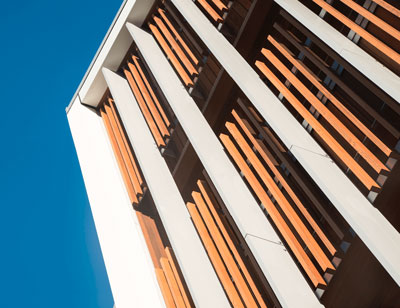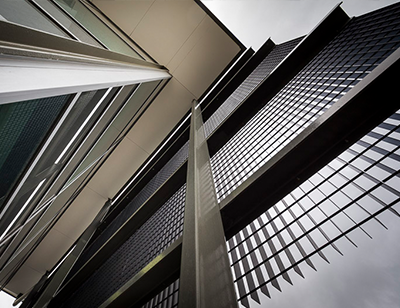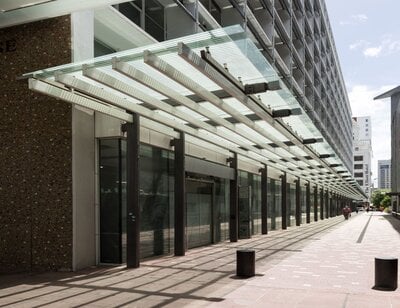Modern CEOs and CFOs are rightly concerned with carbon emissions, with many setting their companies on a path to net zero. So when it comes to commissioning a shiny new corporate headquarters, it would make sense to specify the need for the building to be net zero, and then provide the architect with a blank canvas and a blank cheque to achieve that goal.
Only we know it doesn’t work like that and blank cheques don’t really exist. There’s always a budget to work to. But a blank canvas is possible and makes a logical starting point for designing a building that can meet carbon goals. Or does it?
When the Grosvenor Group completed their first net zero carbon office building in their 348 year old history in 2023, the Duke of Westminster’s property company did it by retrofitting a mid-1980’s concrete frame building, part of what The Guardian newspaper called a ‘retrofit revolution’. At the heart of this revolution is a challenge to the assumption that building new is best for the environment. Because it turns out that’s not always the case. In many instances, retrofitting a building, including the facade, can offer real advantages that outweigh the alternative of demolishing and rebuilding. Sure, when compared with greenfield sites the operational carbon advantages might be reduced (although improved versus the existing building), but with no blank cheque to rely on, retrofitting and the adaptive reuse of a current building will save the embodied carbon cost. Taking this saving with an improved operational carbon performance, along with the anticipated likely cost savings of a retrofit, makes for a very appealing option that stacks up.
Indeed, it stacks up so well the City of London has adopted a retrofit first policy as it works towards their 2040 Net Zero Target. This policy encourages a shift from a linear to circular waste model in a building’s construction and operation to minimise waste through a building’s life cycle, taking into account the whole life-cycle carbon and operational energy emissions. Their approach and advice, when simplified, is that retrofitting improves operational carbon use, and when those gains are combined with saving the embodied carbon costs incurred by knocking down and rebuilding, they present the most attractive option. There is also the caveat that doing so also helps maintain the character of cities by preserving older buildings. Although anyone who has spent time in cities like Coventry might not see that as a good thing. However, there is a financial kicker too.
That financial kicker comes from a possible extra £35 billion in economic output as the result of retrofitting. A report commissioned by the National Trust, Historic England and leading property institutions, revealed significant economic benefits from retrofitting, including a boost to Tourism and Hospitality. This is because nearly a quarter of all UK homes were built before 1919, and almost one third of commercial buildings are also deemed to be historic sites. So preserving these buildings helps preserve the rich tapestry of history that attracts many visitors to Great Britain every year.
Then there’s jobs. To revamp the UK’s historical buildings over the next 30 years would create a need for more plumbers, electricians, carpenters and scaffolders. In total, the report shows 105,000 new jobs would be created from a nationwide retrofit approach. That’s no bad thing given the precarious state of the economy.
But what about New Zealand? It’s hard to argue against the UKs stance and carbon emissions savings, financial savings, increased economic output and additional jobs no doubt enjoy bipartisan support. As they would here if the same argument passes muster. But does it?
The Ministry of Business, Innovation and Employment (MBIE) commissioned the research report ‘Understanding Potential Avoided Upfront Carbon Emissions Through Strengthening of Seismically-Deficient Buildings’ which was published in November 2024. It looks at the retrofit vs rebuild debate specifically for earthquake prone buildings, but at the risk of conflating information and findings, we can sensibly draw conclusions that can be readily applied to similarly aged NZ building stock.
The report used a Life Cycle Assessment (LCS) Methodology to calculate and quantify the environmental impact of a building across its entire life cycle, looking at upfront carbon from the materials and products that form the building. We should note they didn’t add operational carbon differences into the equation as they considered these to be comparatively small when compared to embodied carbon differences. However, while smaller, they are still worth pursuing and when it comes to achieving Net Zero goals they can make all the difference.
Two buildings were used as examples for retrofitting in the research paper; a two-storey unreinforced building in Auckland and a mid-rise reinforced concrete building in Wellington. Retrofit work required for these buildings included groundwork, structural work, the external envelope (including the facade), non-structural internal elements, and building services. This was then compared to new build assumptions covering; foundation, flooring, framing, building envelope (including facade), fitout, and services.
Extrapolating the results and scaling them (noting the need for several assumptions) would then provide an indication of an ‘average retrofit vs rebuild’ scenario that could act as guidance when deciding the best approach. To skip to the end, the report concludes by stating the avoided upfront embodied carbon emissions from strengthening as opposed to demolishing and rebuilding are ‘substantial’, providing a potential saving in the order 688 kgCO2e / m2 GFA.
It’s worth noting, this saving compares significant retrofit work vs demolish and new build. We can safely assume a smaller retrofit (requiring less substantive remedial works) versus demolish and build would therefore be even better and exceed the ‘substantial’ conclusion drawn in the report.
We should probably mention the facade now. Because there’s a few additional considerations that our experience tells us need to be added. This begins with cost.
In the case of a minor retrofit, changing the facade of a building can increase its appeal significantly by modernizing the appearance. Indeed, for a building owner, adding a new facade might be the most cost-effective way of changing the perception of their building, saving the need to fund a more sizable adaptive reuse project. In that regard, it’s much like a ‘facelift model’ for a vehicle that is successful in extending sales and the life of a particular model before a complete redesign is required. Of course, for vehicles the time span might be 2 to 3 years. For buildings, we’re talking 2 to 3 decades.
Then there’s the impact on operational carbon. Let’s say the ‘building facelift’ is nothing more complicated than adding perforated screens. It’s a relatively inexpensive facelift but the shading properties of the screens, controlling thermal gain, can reduce HVAC power requirements by up to 35%. There’s also benefits to be accrued from the screens extending the life of glazing and cladding by reducing the weather load on the building envelope.
Of course, critics might argue against all the above and suggest reports and findings are well and good, but what about real-world examples. In which case, we should point to ‘Fellenord 15’ in Eindhoven. A 32,000m² Government Office Building with a robust shell that could be retained, it underwent an extensive retrofit resulting in a 40% saving in the CO2 footprint vs a demolish and build. Importantly (for us anyway) is the stunning facade with its moire effect, which completely transforms the aesthetic of the building.
Closer to home, the Xero Building is a prime example of how adding a new facade can transform the appeal of a heritage building, breathing a new visual life into an otherwise tired look. A similar approach could be adopted to numerous buildings in most City centres, especially for Council-owned properties in need of rejuvenating at a time when considerable rate pressure severely limits more extensive redevelopment.
So where does this leave us and what is the point we’re trying to make? To begin with, don’t expect much by way of architectural delights should you happen to visit Coventry. But on a more serious note, all the research, backed by real-world examples, point to the adaptive reuse and retrofitting of buildings to offer significant advantages as regards carbon emissions. They can also be more affordable, generate a positive economic impact, and help maintain but modernise buildings for ongoing cultural heritage benefits, which themselves can help boost the economy.
In all cases, from the smallest facelift to the biggest refurbishment, the facade plays an important role and can impact the operational carbon and increase the appeal of the building. And this is the real point we’re trying to make, because this is where we can help, with our design, build and installation of facades. It’s potentially a whole lot better for the environment. And your finances.

